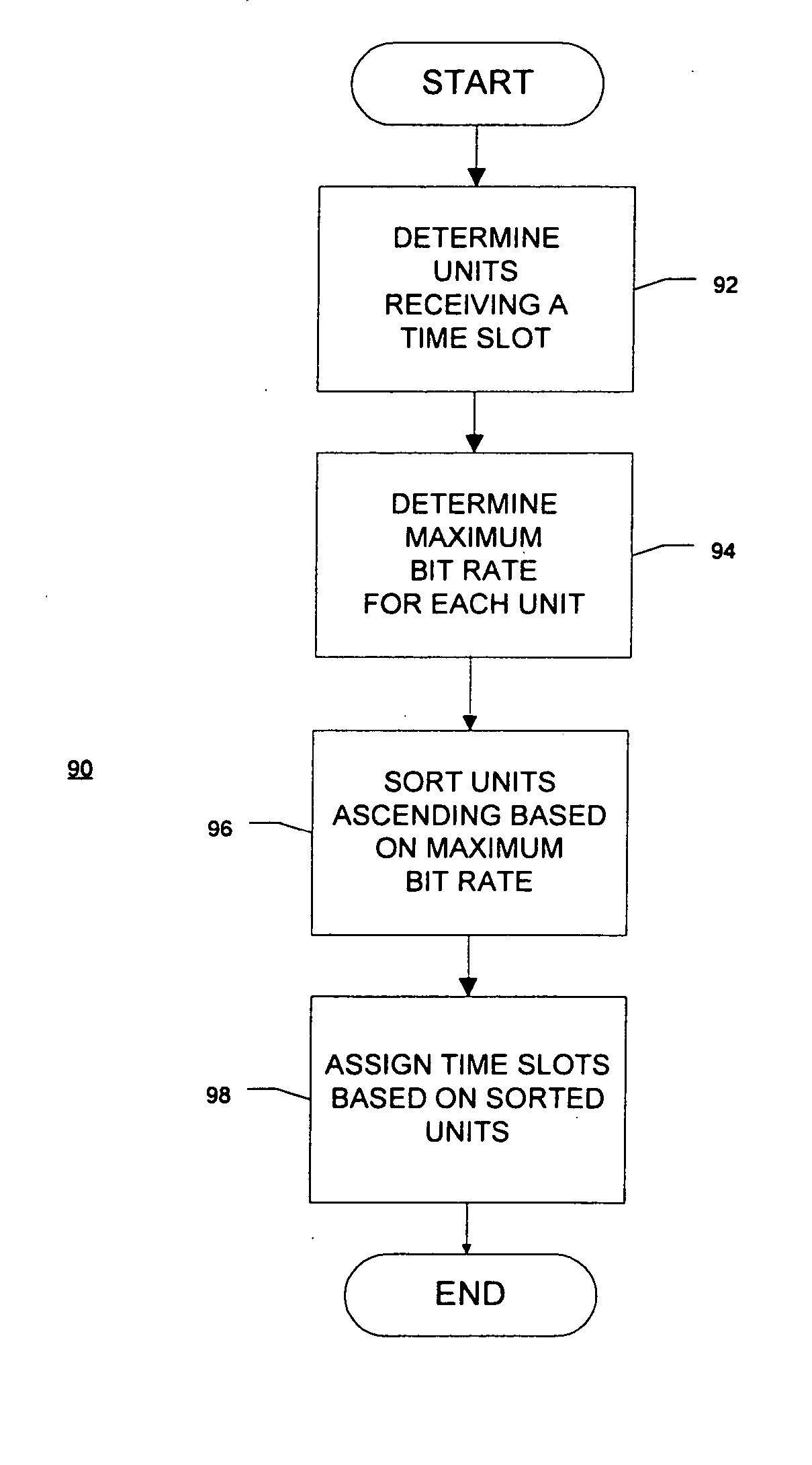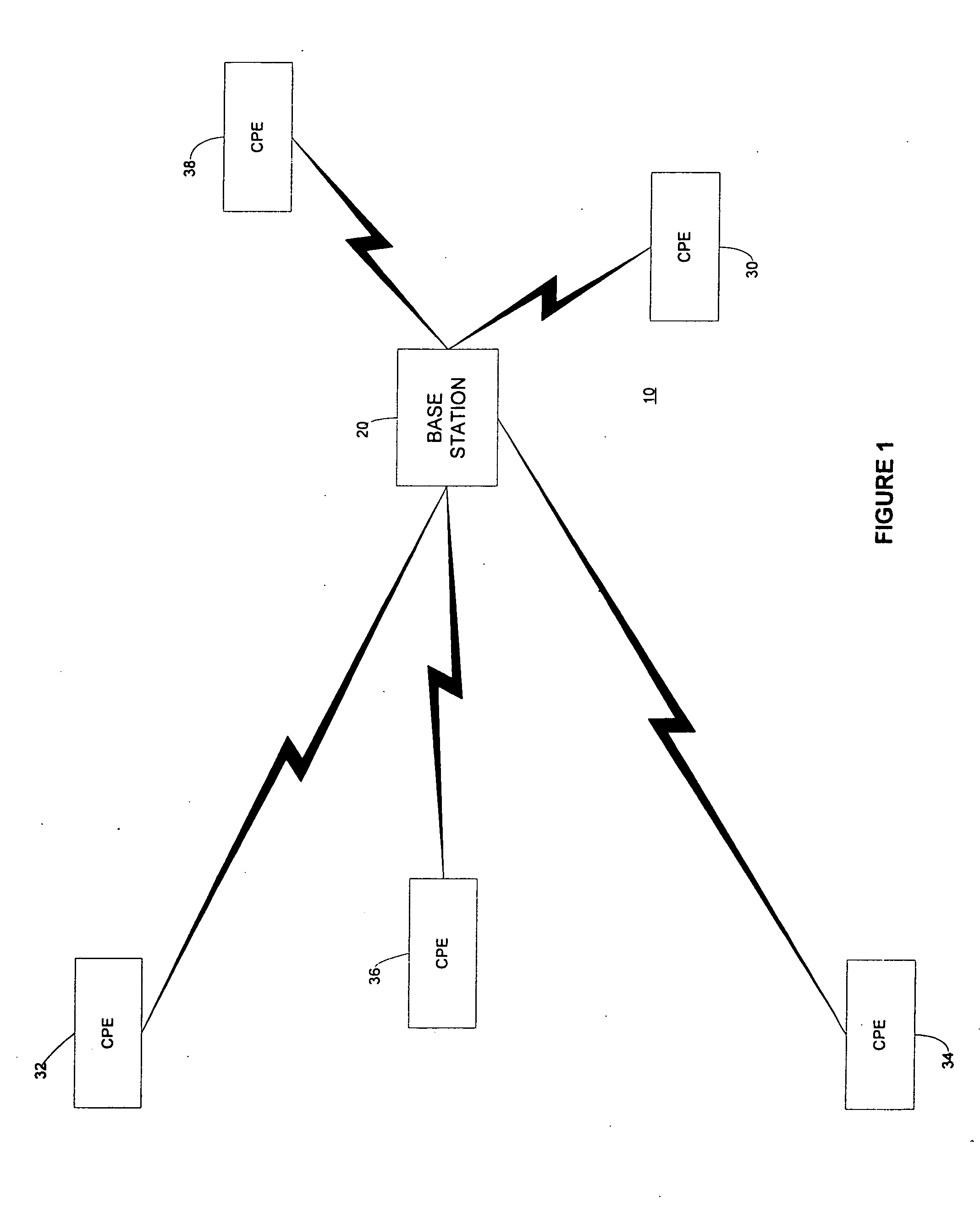Frame structure for an adaptive modulation wireless communication system
a wireless communication system and frame structure technology, applied in the field of communication systems, can solve the problems of channel interference between adjacent adjacents, limited maximum bit per symbol rate modulation scheme that may be employed with a cell, and common distortion of signals
- Summary
- Abstract
- Description
- Claims
- Application Information
AI Technical Summary
Benefits of technology
Problems solved by technology
Method used
Image
Examples
Embodiment Construction
[0029] Throughout this description, the preferred embodiment and examples shown should be considered as exemplars, rather than as limitations on the present invention.
[0030] The present invention includes an improved frame structure and a process of generating a frame structure for use in wireless communication systems employing adaptive modulation. Adaptive modulation includes varying the bit per symbol rate modulation scheme or modulation complexity of signals transmitted between a CPE and a base station as a function of channel interference of the signals or implementation or modem complexity of the CPE. FIG. 1 is a diagram of an exemplary cell 10 that includes a base station 20 located centrally in the cell 10 and a plurality of CPEs 30, 32, 34, 36, 38 associated with the base station. FIG. 1 does not shown buildings or other physical obstructions (such as trees or hills, for example), that may cause channel interference between signals of the CPEs.
[0031] As described above, t...
PUM
 Login to View More
Login to View More Abstract
Description
Claims
Application Information
 Login to View More
Login to View More - R&D
- Intellectual Property
- Life Sciences
- Materials
- Tech Scout
- Unparalleled Data Quality
- Higher Quality Content
- 60% Fewer Hallucinations
Browse by: Latest US Patents, China's latest patents, Technical Efficacy Thesaurus, Application Domain, Technology Topic, Popular Technical Reports.
© 2025 PatSnap. All rights reserved.Legal|Privacy policy|Modern Slavery Act Transparency Statement|Sitemap|About US| Contact US: help@patsnap.com



